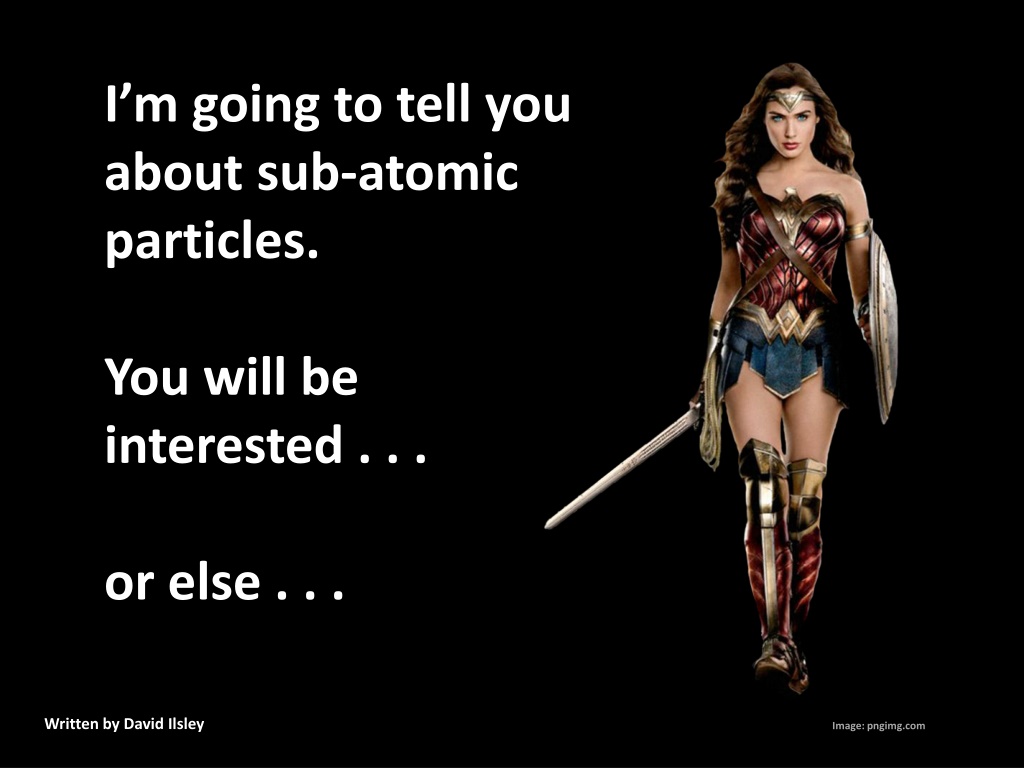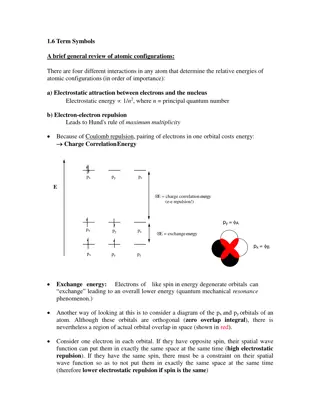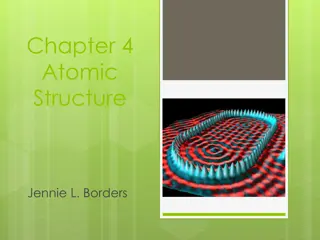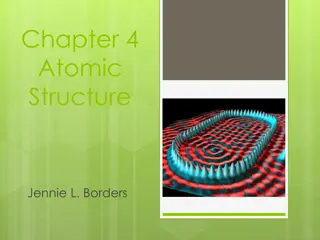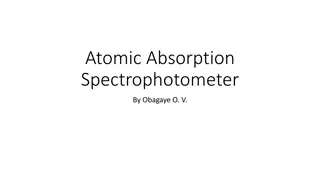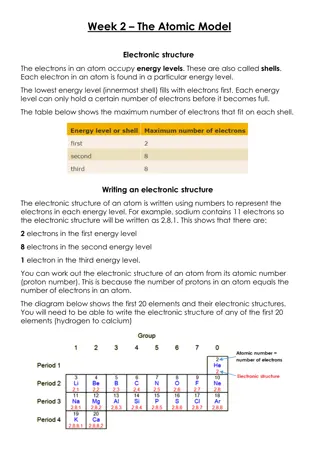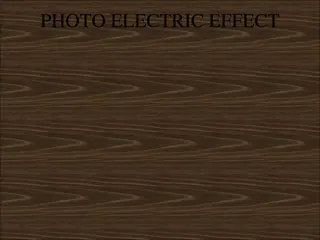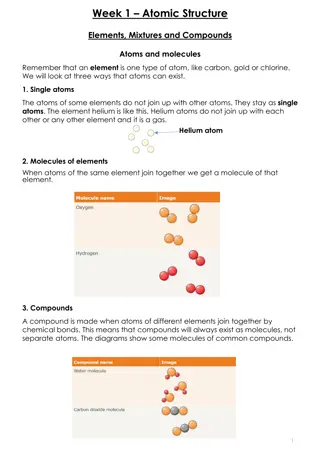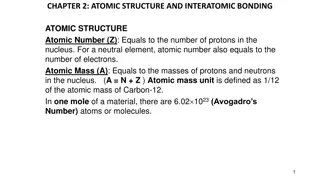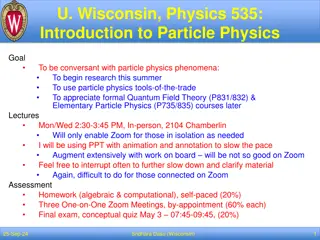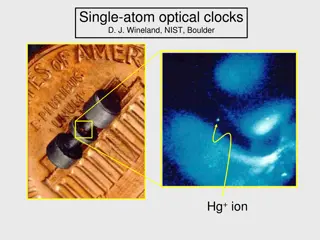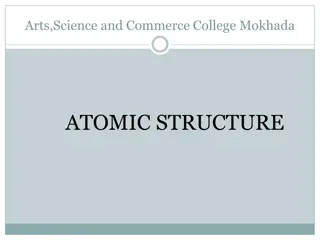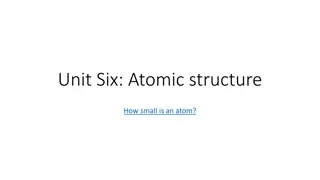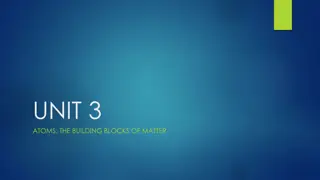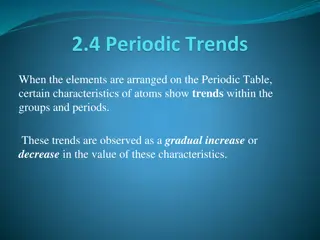The Evolution of Sub-Atomic Particle Theory
Human pursuit of understanding the universe led to the concept of atoms by Democritus and further advancements in sub-atomic particle theory. From the initial idea of indivisible atoms, to the discovery of protons, neutrons, and electrons, to modern experiments with particle accelerators, the journey has been one of simplification and deeper exploration into the building blocks of matter.
Download Presentation

Please find below an Image/Link to download the presentation.
The content on the website is provided AS IS for your information and personal use only. It may not be sold, licensed, or shared on other websites without obtaining consent from the author.If you encounter any issues during the download, it is possible that the publisher has removed the file from their server.
You are allowed to download the files provided on this website for personal or commercial use, subject to the condition that they are used lawfully. All files are the property of their respective owners.
The content on the website is provided AS IS for your information and personal use only. It may not be sold, licensed, or shared on other websites without obtaining consent from the author.
E N D
Presentation Transcript
Im going to tell you about sub-atomic particles. You will be interested . . . or else . . . Written by David Ilsley Image: pngimg.com
Image: pexels.com Science is the human attempt to describe and understand the universe. We observe lots of things in lots of situations. We then try to find a few simple ideas which explain everything we see.
There are millions of different substances in the world. About 2400 years ago, Democritus in ancient Greece proposed that all matter was made of a few types of tiny, indivisible particles called atoms. (Atom is Greek for indivisible.) Putting these atoms together in different combinations could make all the huge variety of substances we see around us. Image: commons.Wikimedia.org
By about 1890, this theory had been quite well confirmed by experiment and about 80 different atoms were known. These 80 atoms explained all the millions of different substances. Thus, millions of things were explained in terms of just a few simple ideas. Image: pickpik.com
Atoms were thought of as tiny spherical balls. Image: pickpik.com
But it was to get even simpler. By 1930, it had been shown that all atoms consist of a nucleus made of different numbers of protons and neutrons surrounded by a cloud of electrons. Protons, neutrons and electrons became the new fundamental particles that all matter is made of. Down from 80 to 3. Image: commons.Wikimedia.org
Starting in the 1950s, experiments were done with particle accelerators like the Large Hadron Collider at CERN on the border of France and Switzerland. Image: commons.Wikimedia.org
Image: commons.Wikimedia.org The Large Hadron Collider uses so much power that it can only be used in summer when people need less electricity to heat their homes.
The Large Hadron Collider should not be confused with the Large Hadron Kaleidoscope, available in the gift shop. Imagefreesvg.org Image: flickr.com
The Large Hadron Collider accelerates particles like protons to 99.999999% of the speed of light by running them round and round a 27 km circular tunnel using electromagnets, then collides them with particles coming the other way. A cloud chamber is used to look at new particles that come out of the collision. Image: en.wikipedia.org
These experiments showed that protons and neutrons are in fact not fundamental particles, but that they are made up of quarks two types up quarks and down quarks. A proton consists of 2 up quarks and a down quark; a neutron consists of 2 down quarks and an up quark. Proton Neutron
Proton Neutron Up quarks have a charge of +2/3 Down quarks have a charge of 1/3 So, protons have a charge of +1 and neutrons have a charge of 0 So, matter is now made of up quarks, down quarks and electrons. Still 3 things. Image: en.wikipedia.org
As well as quarks and electrons, there are also neutrinos. These are not part of normal matter, but are produced when certain nuclear reactions take place, like radioactive decay, fission and fusion. They then fly off at almost the speed of light. Neutrinos interact very little with other particles and most will pass right through the Earth without touching anything. Electrons and neutrinos are leptons. Leptons are much lighter than quarks. Image: commons.Wikimedia.org
Now to complicate things, when a lot of energy is available, like in a particle accelerator or a supernova, heavier versions of the quarks and leptons can come into existence, though they decay back to the lighter versions within a tiny fraction of a second. These heavier versions of the particles are not part of normal matter either. Image: commons.Wikimedia.org
Quarks and leptons together are called fermions. There are also bosons. These produce the fundamental forces: the strong nuclear force the weak nuclear force and the electromagnetic force. Image: commons.Wikimedia.org
Photons produce the electromagnetic force which causes protons and electrons to attract and causes protons to repel protons and electrons to repel electrons. Gluons produce the strong nuclear force which holds quarks together in protons and neutrons and holds protons and neutrons together in the nucleus, overcoming the electromagnetic repulsion between the protons. Z and W bosons produce the weak nuclear force which causes nuclear reactions like radioactive decay, fission and fusion. The Higgs boson gives particles their mass. Image: commons.Wikimedia.org
Gluons pull two quarks together with a force of 8 tonnes weight. Quarks are so tightly bound together than no one has ever separated them or observed a free quark. In fact, quarks cannot be separated. The energy required to separate them would be enough to create more quarks which would combine with the separated ones. So there still wouldn t be any free quarks.
Note that the fourth force, gravity, is not included here. The boson thought to produce gravity is the graviton, though the quantum mechanics of gravitons is not understood, so it is left out of theories of subatomic particles. Image: commons.Wikimedia.org
This set of subatomic particles is called the standard model . Image: commons.Wikimedia.org
There are also anti- matter particles (anti- particles) for most of these particles. Anti-particles have the same mass as the corresponding particle, but opposite charge. For example, the anti- matter particle for an electron is a positron. The anti-matter particle for a tau neutrino is a tau anti-neutrino. Image: commons.Wikimedia.org
Anti-matter particles either annihilate when they meet their normal particle, turning into gamma ray energy, or they decay after a very short time. So they are not part of normal matter either. Image: commons.Wikimedia.org
Chemistry can still be explained in terms of protons, neutrons and electrons. Adding in photons and neutrinos allows us to explain most of physics too. If we add dark matter and dark energy, we can also explain most of astronomy the science of everything. Image: wallpaperflare.com
Dark matter is thought to be made of particles, though not any of the particles in the standard model. So clearly, there are more particles than those in the standard model. Dark energy seems to be a property of space and may not be made of particles. Image: wallpaperflare.com
